You are here
Tour to Oxus treasure.
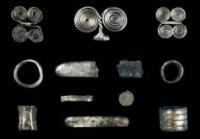
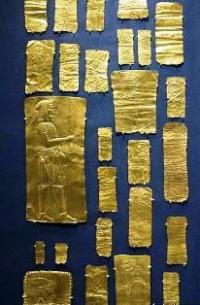
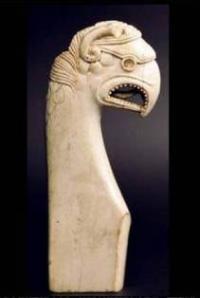
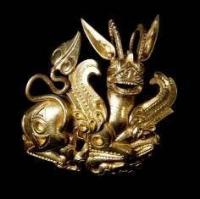
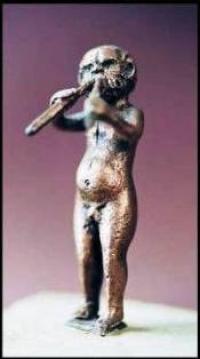

Trip on Chiluchor Chashma spring and Takhti Sangin complex.
“Travel is fatal to prejudice, bigotry, and narrow-mindedness, and many of our people need it sorely on these accounts. Broad, wholesome, charitable views of men and things cannot be acquired by vegetating in one little corner of the earth all one's lifetime”
Mark Twain.
In 1877, on the washed-out right bank of the Amu Darya, (in ancient times this part of the river and its tributaries were known as the Oxus) local residents found a treasure near Takhti Kubat consisting of more than 2,000 gold and silver coins, and highly artistic gold-ware of Achaemenid and Greco-Bactrian eras. It was sold to three Bukharan merchants who were bound, with their caravan, for North India (present-day Pakistan).
On the journey the merchants were robbed by nomads from the Afghan Gilzai tribe. Later, thanks to the involvement of a British man with some influence, part of the treasure was returned to the merchants and part remained with a tribal leader.
When they reached Rawalpindi, the merchants sold the treasure to representatives of the British administration, who later handed it over to the British Museum in London. Altogether 521 gold and silver coins and 176 gold and silver articles (sheath lining, garments, decorations, bracelets, plates, statuettes of animals, engraved plates and other articles) - approximately a third of what was initially found on the Amu Darya River bank - arrived at the Museum.
This treasure, which is still kept in the British Museum, was named the Amu Darya treasure (or the "Oxus treasure"). The treasure mostly dates from the VI- IIIrd centuries B.C. Some of the articles were made in Western Iran, and the remainder in Asia Minor.
They must have arrived in North Bactria (at that time the name of the area where the treasure was found) with Alexander the Great's troops or in the form of rewards for Bactrian soldiers, gifts or maybe in some other unknown way.
Among the articles were also Bactrian-made items, engraved gold-plated scroll with images of priests, warriors and donors holding bunches of twigs in their hands, flowers, weaponry or pack animals like camels or horses. These plates were most likely dedicated to a divinity, asking that wishes come true, and placed in containers in temple alcoves.
The short description of cultural tour on source Chiluchor Chashma and archeologic complex Takhti Sangin:
Almaty - Dushanbe - Ghissar fortress - settlement Melikabad - settlement Beshchorban - settlement Shartauz - source Chiluchor Chashma - complex Takhti Sangin - lake Iskanderkul - kishlak Saratog - valley Saratog - pass Anzob - gorge Varzob - city Dushanbe.
Distance route: 803 km.
Season: from May 1th till October, 30th.
Best time for tour: June - September.
Duration of tour: 7 days, 6 nights.
The detailed program of cultural automobile tour from Dushanbe in settlement Shaartauz and city Kurgan Tyube:
Group Cultural Tours Tajikistan.
1 Day. Almaty – Dushanbe – Ghissar village – Ghissar fortress – Dushanbe (25 km).
Departure from Almaty to Dushanbe. Arrival in Dushanbe, meeting in the airport. Transfer to hotel, accommodation. After accommodation start sightseeing the city: visit to Tajikistan United Museum - includes the exhibits on history, natural history and art. Museum of ethnography and history – Buddha in Nirvana, professional showcase of XX th century Tajik art. The collection includes pottery, carpets, cloaks, embroidery, jeweler, musical instruments, woodwork and more.
Monument Somoni and park Rudaki Lunch in local restaurant in Dushanbe. After lunch, transfer to Hissar village (25 km), visit to Ghissar fortress outside of city – the remains of an XVIII th century fortress, occupied until 1924 is located on west of Dushanbe. Beside the fortress are two plain madrassahs, one dating from the XVIII th century and the other XIX th, and beyond them is the mausoleum of XVI th century. After excursion in Hissar fortress, transfer to Dushanbe. Arrival in Dushanbe, transfer to national chaykhana “Rohat”, dinner. After dinner, transfer to hotel, overnight.
Day 2. Dushanbe - spring Chiluchor Chashma (233 km).
Breakfast. Transfer: Dushanbe - spring Chiluchor Chashma (196 km). Arrival on spring Chiluchor Chashma, walk in vicinities. Spring Chiluchor Chashma («Forty four springs») - so is called a place located in the south of Tajikistan. Here the small hill, in the middle of the heated desert, from under the ground has five greater water sources, breaking up on 39 fine. All springs, merging, form the river in width 12 - 13 meters in which a lot of fish lives.
The legend narrates that just caliph Ali, having seen the dried up river Romit, has reached in Chiluchor Chashma and has asked the Allah to give some water. Thus he has struck a hand in bottom of a nearby hill, and there where its fingers have concerned the grounds, there were five pure springs. Nearby on a hill the small mausoleum towers. In him it is ostensibly buried certain sacred by name Kambar Bobo which, under the legend, was the head of a stable of caliph Ali. Here there are tombs of four more sacred.
Transfer: spring Chiluchor Chashma - settlement Shaartauz - kishlak Chirik - kishlak Teshik-Tosh - archeologic complex Takhti Sangin (44 km). Visiting of archeologic complex Takhti Sangin. The unique treasures which have received the name are stored in the British museum «Amu Darya clade» (or «Clade Oks»). Clade has been found in 1877 on right I protect Amu Darya (during its Greek period named Oks).
The find consisted of more than 2000 gold and silver coins, gold products IV - III centuries B.C.
The Local residents who have found clade, have sold to its merchants going with a caravan to India, there from clade has got already to England. In 1976 archeologists have begun excavation of a site of ancient settlement in natural boundary Tahti Kubad. This stone site of ancient settlement named by archeologists Takhti Sangin, has appeared unique. In the center of a site of ancient settlement the ancient temple which has received the name «Temple Oks» has been dug out.
Within 15 years of excavation on Ottoman Sangine it has been found more than 5 thousand subjects of historical importance Greek Baktria time.
Transfer: complex Takhti Sangin - settlement Shaartauz (33 km). Arrival in settlement Shaartauz, transfer to the guest house, accommodation, a dinner and overnight.
Day 3. Settlement Shaartauz - Dushanbe (230 km).
Breakfast. Transfer: settlement Shaartauz - kishlak Saiyed - mausoleum-madrasah Khodja-Mashad (6 km). Arrival in kishlak Saiyed, transfer to the mausoleum-madrasah, excursion in vicinities of a monument. mausoleum-madrasah Khodja-Mashad (IX - XI в.в.), located in settlement Saiyed, amazes imagination with monumentalism of forms and virtuosity of a bricklaying. It is the unique mausoleum which has saved in the Central Asia with a wooden groove.
The district where the mausoleum is located, from an antiquity is known as «Kabodian» and long since drew attention of travellers. Khodja-Mashad - the known real person in the Islamic world, he has come in Kabodian from the countries of the Near East approximately in the end IX - beginning X of centuries. In local legends it is spoken, that the mausoleum has appeared for one night and is the miracle sent on the ground by the Allah.
The monument represents two separate mausoleums costing by a number, connected by vaulted pass. Near to Kurgan Tyube, on coast of the river Vakhsh, there is very interesting place - ruins of site of ancient settlement Lagman which time of occurrence is dated X - XIII centuries. In the middle of XX century of excavation during which archeologists had been found out pipes of an ancient water pipe, the wells which have been laid out by a brick, fortifications with towers here were conducted.
This town, in days of the blossoming was one of the largest settlements of ancient Bactria and borrowed enough greater on those times territory - 43 hectares.
Transfer: mausoleum-madrasah Khodja-Mashat - settlement Shaartauz - settlement Kabodien - kishlak Yangiabad - kishlak Sanoat - Kurgan Tyube (102 km). Arrival in Kurgan Tyube, a lunch in local cafe. A sightseeing tour on city, visiting of a town history-study of local lore museum. The quantity of exhibits in a museum in Kurgan Tyube makes approximately 700 copies.
Place of interest of a museum is the diopama «Tepai Kurgon» and «Pastai Kosibon» - all over again the picture on a theme of past Vaksh of a valley where except for the burnt ground, the ruthless sun and rare caravans was not anything upwards rises, then before eyes of visitors the remarkable panorama of a new valley with cities and modern constructions opens.
Transfer: Kurgan Tyube - Nurek a water basin and city Nurek (38 km). A stop in vicinities Nurek a water basin, walk, photographing of vicinities. Nurek - city powermans, located on coast of the rough, mountain river Vakhsh. The exotic and beautiful city of Nurek. The road from the city of Nurek in Dushanbe, is very interesting to inhabitants who live in intermountain valleys, passes through pass in height of 1610 meters above sea level.
On the one hand, on pass - steep rocks, on the other hand - dizzy precipices. In city it is a lot of trees. The main place of interest of vicinities of a water basin is a 300-meter dam - the highest in the world. More than 20 years Nurek the HYDROELECTRIC POWER STATION gives people light and warmly. Nurek gives light to all kishlaks Ghissar of a valley, gives energy Tadjik an aluminium factory, Yavan an electrochemical factory and Tursun-Zade a porcelain factory.
Transfer: Nurek a water basin - Dushanbe (78 km). Arrival in Dushanbe, transfer to hotel, accommodation, a dinner and overnight.
Day 4. Dushanbe - lakes Iskanderkul (160 km).
Breakfast. Transfer: Dushanbe - lake Iskanderkul. On a way a stop on pass Anzob, short walk and photographing in vicinities pass. From road the surprising landscape on mountains of Ghissar mountains opens, the road up to pass Anzob goes along the river Varzob. Arrival on a pearl of mountains Fany - lake Iskanderkul. Transfer on a camp center «Iskanderkul», accommodation.
There is an opinion, that the lake Iskanderkul is named in honour of Alexander the Great, the ancient greek commander who has won local mountaineers, has created this lake and has flooded settlements of mountaineers. The lake, is mentioned, in descriptions of a campaign of Alexander the Great and to these the antiquity of lake proves to be true. The level of this lake gradually decreases, to what coastal stones on slopes of mountains surrounding lake testify.
A lunch in eating house in the camp center. After lunch walk on 38 a meter falls and five springs Panchashma. Returning to a camp center, a dinner and overnight.
Day 5. Lake Iskanderkul - kishlak Saratog - valley Saratog (10 km).
Breakfast. After a breakfast transfer to the most beautiful valley of Tajikistan - valley Saratog. Valley Saratog is surrounded mountains Fany, from here opens a kind on the highest peak of mountains Fany - peak Chimtarga of 4955 meters above sea level. Foot walk to pass Dukdon. On a way on pass we shall see tremendous landscapes of mountains Fany, the river Karatog.
Mountains Fany, it is the mountain ridges which have stretched in latitudinal strike a direction, - from the West on the east, and in meridian direction - from the south on the north. The birch, a poplar, a raspberry, a black and red currant, sea-buckthorn berries, a barberry, a dogrose, a wild cherry much grow in valleys of the mountain rivers, ephedra, above - a juniper which has the local name - Archa, the age of some trees reaches about 1000, still above - colourful miscellaneous herbs the Alpine meadows. Picnic at the river Karatog.
After a lunch returning in kishlak Saratog. A dinner in the Tadjik house with national kitchen and overnight in the guest house.
Day 6. Kishlak Saratog - city Dushanbe (120 km).
Breakfast. Transfer: kishlak Saratog - lake Iskanderkul - pass Anzob (30 km). On a way a stop on pass Anzob, short walk and photographing in vicinities pass. From road the surprising landscape on mountains of Ghissar mountains opens, the road up to pass Anzob goes along the river Varzob.
Transfer: pass Anzob - Dushanbe (90 km). In front of Dushanbe we shall go through picturesque gorge Varzob, here it is a lot of vacation spots, hotels, cafe and restaurants. Arrival in Dushanbe, transfer to hotel, accommodation, rest, free time. Dinner and overnight.
Day 7. Departure from Dushanbe.
Accompanying service at departure to airport. Departure from Dushanbe.
Note:
Author program of Alexander Petrov. Copying and introduction - from the sanction of the author petrovsra@mail.ru
Make use of article:
Javad Abed Khorasani. http://www.asraresokhan.com







